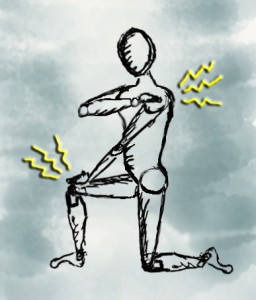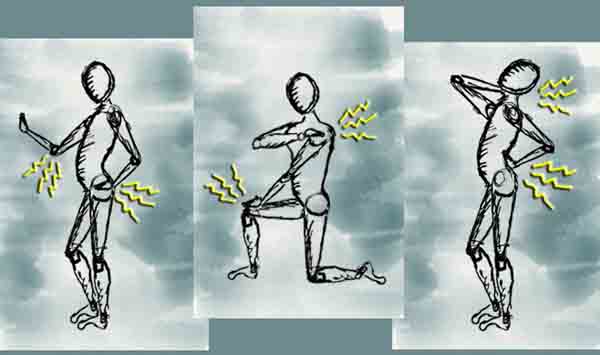Ask the Yogi: Why do I feel sore after yoga?

Q: I did a new yoga class on Friday that was vigorous. On Saturday I was fine, but on Sunday I felt sore. Why did this happen. Does this mean something is wrong?
A: What you are likely feeling in this scenario is called Delayed-onset Muscle Soreness. It is a natural response in our body when we have done a workout our muscles are not used to. There is likely nothing at all wrong and your soreness will diminish over the next couple of days. However, if you feel intense pain, if the area is red or swollen or if the pain does not diminish over the next couple of days then seek advice from your doctor. Strong pains are not a part of exercise and can indicate a sprain or a strain.
Normal muscle sensations in exercise can be confusing sometimes. When we contract a muscle repeatedly, eventually there will be a build of of lactic acid that creates a burning sensation in the working muscle. The lactic acid is a by-product of energy creation in the muscle when we do an activity that outpaces our oxygen supply. We switch from aerobic to anaerobic cellular respiration and end up with a temporary substance called lactic acid. There is nothing wrong or dangerous about lactic acid but it can be somewhat sensational and a little annoying. Within 45 minutes almost all of the lactic acid we create in exercise gets reconverted by our body when we stop exercising and catch up on our breathing to give the muscles enough oxygen. When the muscle is provided with enough oxygen, the lactic acid within it is converted into water and carbon dioxide – the air we breathe out – and that is the end of any sensation.
Due to its temporary nature, lactic acid is rarely the reason we feel continued soreness in a muscle after exercise. Instead, most muscle sensation after 24 hours can be attributed to changes in the muscle cell in response to the exercise. When we place a muscle under load and make it do repeated actions we microscopically disrupt the muscle fibers. These miniature tears are a natural part of exercise and will stimulate the body to make the muscle fiber thicker. The thickening of the muscle fiber makes is stronger. In time and with repeated exercise the thicker fiber results in a bigger muscle. Keep in mind though, it takes time for the body to go through the rebuilding process. We don’t instantaneously have thicker muscle fibers and we have to make sure we get plenty of nutrition and rest as well. We should always make sure we are training our body properly and taking time between hard workouts. Studies have shown that those who work out intensely two days in a row are more likely to end up with an exercise induced injury.
When you have worked out hard enough for your muscles to feel sore you also need to make sure you are adapting your diet to meet your increased protein needs. Not only do we need to eat a protein rich meal or have a protein drink within an hour of finishing exercise, but we also need to increase our protein level if our activity level is increasing. Diets that have insufficient protein delay the exercise recovery process and may make it very difficult for the body to increase muscle strength (for some great info about an easy way to increase protein, check out the protein powder review). A good rule of thumb is to make sure your protein level is between 15 – 30% of your total calories per day. How much protein you personally need depends on your age, activity level, overall health and even the type of protein you consume. If you would like help in crafting an eating plan that meets your personal goals, I offer nutrition coaching sessions.
So, in summary, it is normal to feel mild soreness after exercise, especially something we are not used to doing. Sometimes the soreness is delayed for a day or so. Take some time to rest your muscles or at least do only light exercise for a day or two after intense exercise. Consider your nutritional needs and adapt them appropriately to your exercise level. If you do all of this is very likely you will be able to do the same workout and feel very little soreness – until the next time you do something new.





